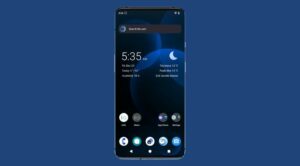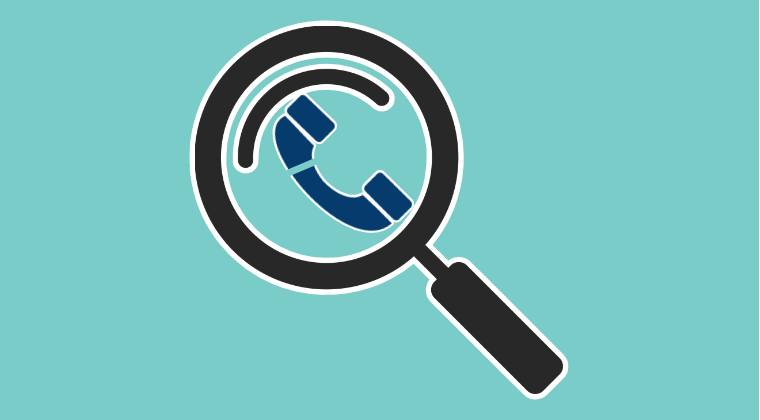In this guide, we will show you the steps to install the latest Pixel Experience ROM based on Android 13 onto your OnePlus 8/Pro/8T. These devices have recently been blessed with the thirteenth iteration of the OS and as was expected, you will now be welcoming more elements of ColorOS and might mistakenly end up finding only a few bits and pieces of the beloved OxygenOS.
Fortunately, these devices are always been quite an active player in custom development, and thanks to it, you now have the perfect opportunity to break free from the shackles of the bloated OS expense and welcome abode a clean stock OS with a plethora of Pixel goodies. So without any further ado, let’s make you aware of the steps to install the latest Pixel Experience ROM based on Android 13 onto your OnePlus 8/Pro/8T.
Table of Contents
What is Pixel Experience ROM?
![]()
As is evident from its name, Pixel Experience is based on the stock AOSP experience that comes with the Pixel devices. So apart from a clean user experience, you will also be getting tons of Pixel goodies and re-installed Google Apps [GApps]. However, even then, it wouldn’t give you a bloated experience as it has managed to strike a fine balance between features and stability.
![]()
Owing to all these reasons, it is no hidden secret why it has scaled the popularity charts and quickly became the go-to choice for numerous tech enthusiasts. If you also echo the same thought process, then this guide will show you the path to welcome this ROM onto your device right away. Follow along.
OnePlus 8/Pro/8T Android 13: Download & Install Pixel Experience ROM
Before starting with the process, make sure to take a complete device backup beforehand. Droidwin and its members wouldn’t be held responsible in case of a thermonuclear war, your alarm doesn’t wake you up, or if anything happens to your device and data by performing the below steps. Make sure you are on the latest OxygenOS 13 Android 13 firmware before flashing this ROM.
STEP 1: Install Android SDK
First and foremost, you will have to install the Android SDK Platform Tools on your PC. This is the official ADB and Fastboot binary provided by Google and is the only recommended one. So download it and then extract it to any convenient location on your PC. Doing so will give you the platform tools folder, which will be used throughout this guide.

STEP 2: Enable USB Debugging and OEM Unlocking
Next up, you will have to enable USB Debugging and OEM Unlocking on your device. The former will make your device recognizable by the PC in ADB mode. This will then allow you to boot your device to Fastboot Mode. On the other hand, OEM Unlocking is required to carry out the bootloader unlocking process.
![]()
So head over to Settings > About Phone > Tap on Build Number 7 times > Go back to Settings > System > Advanced > Developer Options > Enable USB Debugging and OEM Unlocking.
STEP 3: Unlock Bootloader on OnePlus 8/Pro/8T
Next up, you will also have to unlock the device’s bootloader. Do keep in mind that doing so will wipe off all the data from your device and could nullify its warranty as well. So if that’s all well and good, then please refer to our detailed guide on How to Unlock the Bootloader of any Android Device.
![]()
STEP 4: Download Pixel Experience ROM & Recovery for OnePlus 8/Pro/8T
- Now, get hold of the Pixel Experience ROM, Recovery, dtbo, and vbmeta files from below:
OnePlus 8 [instantnoodle]: ROM | Recovery | vbmeta |dtbo OnePlus 8 Pro [instantnoodlep]: ROM | Recovery | vbmeta |dtbo OnePlus 8T [kebab]: ROM | Recovery | vbmeta |dtbo
- Once all the files have been downloaded, transfer them to the platform tools folder on your PC.

- Likewise, rename the ROM file to rom.zip, recovery to recovery.img, vbmeta to vbmeta.img and dtbo to dtbo.img.
- We have just done the rename so that it becomes easier to type in the Command Prompt window.
STEP 5: Boot to Fastboot Mode
- Connect your device to the PC via a USB cable. Make sure USB Debugging is enabled.
- Then head over to the platform-tools folder, type in CMD in the address bar, and hit Enter. This will launch the Command Prompt.
- After that, type in the following command in the CMD window to boot your device to Fastboot Mode
adb reboot bootloader

- To verify the Fastboot connection, type in the below command and you should get back the device ID.
fastboot devices

STEP 6: Flash vbmeta and dtbo
- First off, execute the below command to flash dtbo:
fastboot flash dtbo dtbo.img
- Then type in the below command to flash the vbmeta:
fastboot flash vbmeta vbmeta.img
STEP 7: Flash Pixel Experience Recovery
- You will now have to flash the Pixel Experience recovery onto the recovery partition of your device. So execute the below command for the same:
fastboot flash recovery recovery.img

- Once the flashing is complete, use the hardware keys to bring up the Recovery menu and hit the Power key to confirm it [you may also use the fastboot reboot recovery command].

- Your device will now boot to the Pixel Experience Recovery [it is a touch-based recovery, so you could use it without interacting with the hardware keys].
STEP 8: Copy Content of Slot A to Slot B [Only OnePlus 8T]
[This is only needed for OnePlus 8T. The OnePlus 8 and 8 Pro user should skip this step and move over to the next one]. In order to maintain consistency of the firmware versions between the two partitions on your device, we will now be copying all the contents of Slot A to Slot B.
- Download the copy-partitions ZIP file and transfer it to the platform tools folder on your PC. Also, rename it to cp.zip.
- Then on the Pixel Experience recovery, select Apply Update > Apply from ADB.

- After that, open CMD inside the platform-tools folder and execute the below command
adb sideload cp.zip

- Once flashed, go to Reboot and select Recovery. Your device will reboot to Pixel Recovery.
STEP 9: Factory Reset Device
- From the Pixel Experience Recovery, go to Factory Reset.
- Then select Format Data/Factory Reset > Format Data.

- Your device will now undergo a reset. Once done, you shall get the “Data wipe complete” message.

STEP 10: Install Pixel Experience ROM
- From the Pixel Experience Recovery, go to Apply Update > Apply from ADB.

- Then head over to the platform-tools folder, type in CMD in the address bar, and hit Enter.
- This will launch the Command Prompt. So type in the below command to flash the ROM file via Sideload:
adb sideload rom.zip

- The process will now begin and once done, you shall get the Total xfer: 1.00x message [Got an error? See FAQ below].

- Now go back to the home screen of the recovery and select Reboot System Now. Your device will now boot to the newly installed OS.

That’s it. These were the steps to install the Pixel Experience ROM based on Android 13 onto your OnePlus 8/Pro/8T. If you have any queries concerning the aforementioned steps, do let us know your doubt and the device that you are using in the comments. We will get back to you with a solution at the earliest.
- Android 13 Battery Drain Issue: How to Fix [10 Methods]
- Uninstall Updates missing for System Apps in Android 13: How to Fix
- How to access Android 13 Data and OBB folder & transfer files in them
- Third-Party/Sideloaded Apps crashing in Android 13: How to Fix
Fix: Error During ADB Sideload
If you get one of the below error messages, then it signifies a successful installation and you could reboot the device to the OS without any issues:
- Total xfer: 1.00x
- adb: failed to read command: Success/No error
- adb: failed to read command: No error
- (~47%) adb: failed to read the command: No error
- adb: failed to read command: Undefined error: 0








Piyush maurya
In letest pixel experience rim for OnePlus 8
5g network are working properly or not working.
Talha
I am facing a problem that when i entered the command “fastboot flash vbmeta vbmeta.img” the CMD shows “fastboot: error: ANDROID_PRODUCT_OUT not set”
and also when i enter command of recovery it shows that the specified file is not found although i have downloaded it.
What should i have to do?
Sadique Hassan
Try downgrading Android SDK Platform Tools to an older version and then check out the result.
Sadique Hassan
also make sure to palce the recovery.img inside the platform tools folder.